December 11-12th 2015, 2-day workshop at Kunsthochschule Weissensee’s E-Lab in Berlin, Germany
This workshop is only open to students of the university.
This 2-day introductory workshop introduces textile students to the materials, tools and techniques used animate electronic textiles using electromagnetism. The goal of this workshop if for each student to compile their own swatchbook that will contain samples of various techniques, as well as to compile one complete swatchbook of all examples that will stay with the university. An introductory exercise to familiarize oneself with the materials, techniques and electromagnetism, each student will copy a set of three examples. Then each student will proceed to design their own swatch and make copies of this to contribute to the exchange.
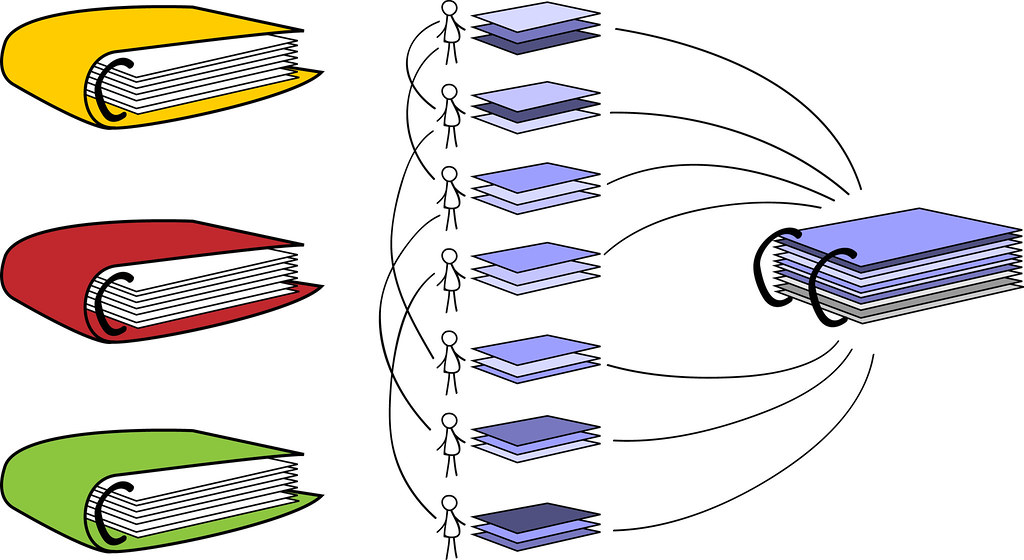
The different kinds of electromagnetic actuation explored in this workshop will be movement (flip-dots, motors, vibration movement) and sound (speakers).
The Exchange

We will need the following information for your original swatch pages:
-Title
-Author
-Date
-Short Description
-Materials
-Techniques
-Circuit Diagram
-Reference
-online link
You can see an example here:
>> http://etextile-summercamp.org/swatch-exchange/downloads/
Schedule
Day 1:
Introduction to the E-Textile Swatch Exchange
>> http://etextile-summercamp.org/swatch-exchange
Showing of select swatch examples from the 2013, 2014, 2015 swatchbooks
Introducing the three electromagnetism swatches:
>> Embroidered Speaker
>> Flip-Dot
>> Wing Flap
Copy the first swatch
>> 6 persons per each kind of swatch
— LUNCH —
Brief presentation session
Copy the other two swatches
end at 17:00
HOMEWORK: outline your own swatch idea
Day 2:
Present swatch ideas
Create your own swatch
Present the outcome of your swatch
end at 17:00
HOMEWORK: Make multiples of your swatch (two copies) to exchange by the meeting in January
Movement
Flip-Dots
Flip-dot fabric >> http://www.kobakant.at/DIY/?p=5915
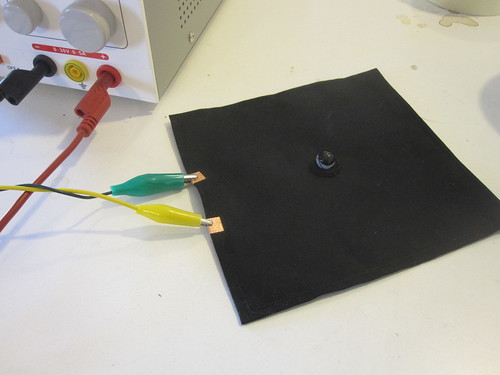
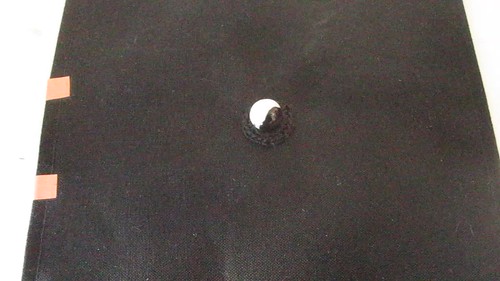
Electromagnetic Flapping Wing
Flapping Wing fabric >> http://www.kobakant.at/DIY/?p=5900

Sound
Embroidered Speaker >> http://www.kobakant.at/DIY/?p=5935

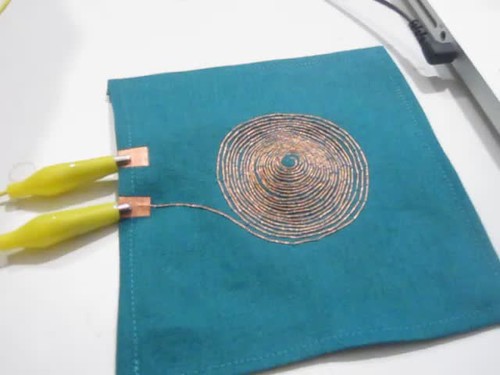
A small intro to electricity
(the below explanation comes from “Getting Started in Electronics” by Forrest M. Mims III)
Electricity, Potential and Current
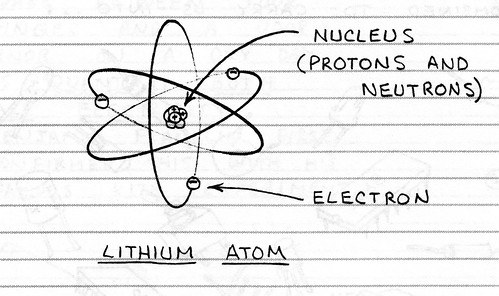
This is a Lithium atom. Lithium atoms have 3 electrons that encircle a nucleus of 3 protons and 4 neutrons.
– Electrons have a Negative electrical charge
– Protons have a positive electrical charge
– Neutrons have no electrical charge
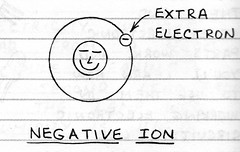
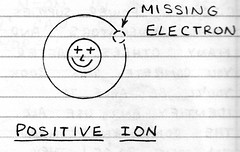
Normally an atom has an equal number of electrons and protons. The charges cancel to give the atom no net electrical charge. It is possible to dislodge one or more electrons from most atoms. This causes the atom to have a net positive charge. It is then called a positive ion. If a stray electron combines with a normal atom, the atom has a net negative cahrge and is called a negative ion.

Free electrons can move at high speed through metals, cases and a vacuum. Or they can rest on a surface.
A stream of moving electrons is called an electrical current.
Ohm’s Law
conductor
Electromagnets
An electromagnet is simply a coil of wire. It is usually wound around an iron core. However, it could be wound around an air core, in which case it is called a solenoid. When connected to a DC voltage or current source, the electromagnet becomes energized, creating a magnetic field just like a permanent magnet. The magnetic flux density is proportional to the magnitude of the current flowing in the wire of the electromagnet. The polarity of the electromagnet is determined by the direction the current. The north pole of the electromagnet is determined by using your right hand. Wrap your fingers around the coil in the same direction as the current is flowing (conventional current flows from + to -). The direction your thumb is pointing is the direction of the magnetic field, so north would come out of the electromagnet in the direction of your thumb. DC electromagnets are principally used to pick up or hold objects.
(from http://www.coolmagnetman.com/magelect.htm)
An electromagnet is a type of magnet in which the magnetic field is produced by an electric current. The magnetic field disappears when the current is turned off. Electromagnets usually consist of a large number of closely spaced turns of wire that create the magnetic field. The wire turns are often wound around a magnetic core made from a ferromagnetic or ferrimagnetic material such as iron; the magnetic core concentrates the magnetic flux and makes a more powerful magnet.
(from https://en.wikipedia.org/wiki/Electromagnet)
Magnetic field produced by a solenoid (coil of wire). This drawing shows a cross section through the center of the coil. The crosses are wires in which current is moving into the page; the dots are wires in which current is moving up out of the page.
The magnetic field lines of a current-carrying loop of wire pass through the center of the loop, concentrating the field there
Simple coil experiment
Battery Holder
We will need battery holder for our swatches. Instead of plastic battery holder, we will make a AAA battery holder with neoprene and conductive fabric. You can find a lot of example here also >> http://www.kobakant.at/DIY/?p=52
Close the back first, then the bottom with normal thread. Make sure the conductive fabric side is inside. Then insert two AAA batteries. Then close the top.

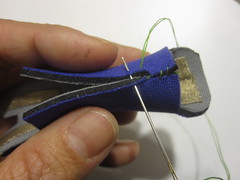

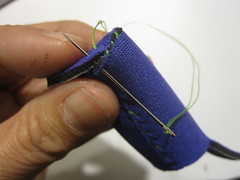


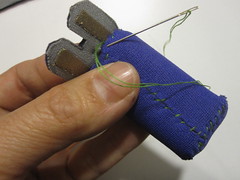
Here is how the finished battery holder looks like. If you insert the battery in series, you should be able to measure 3V between the two tabs.
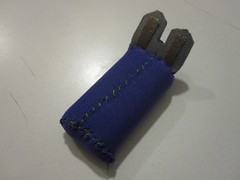




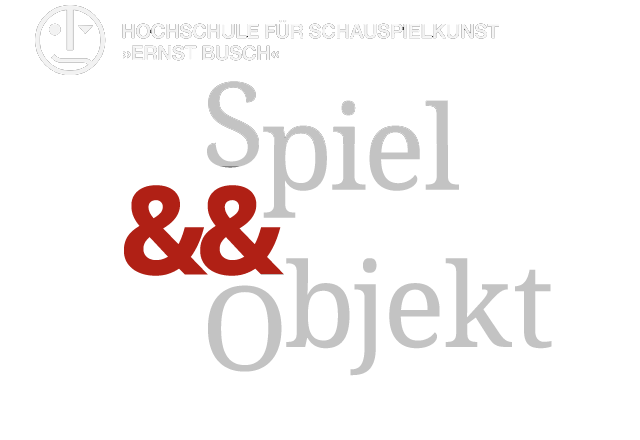
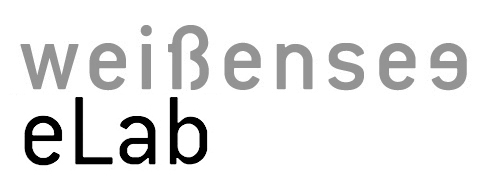



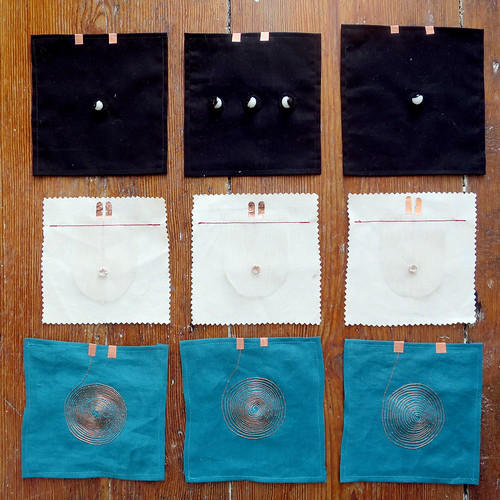

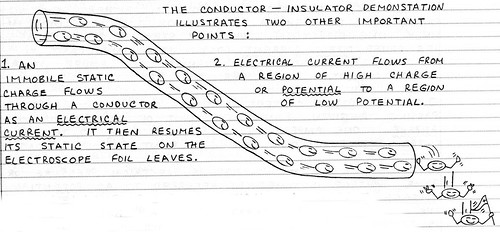
Leave a comment